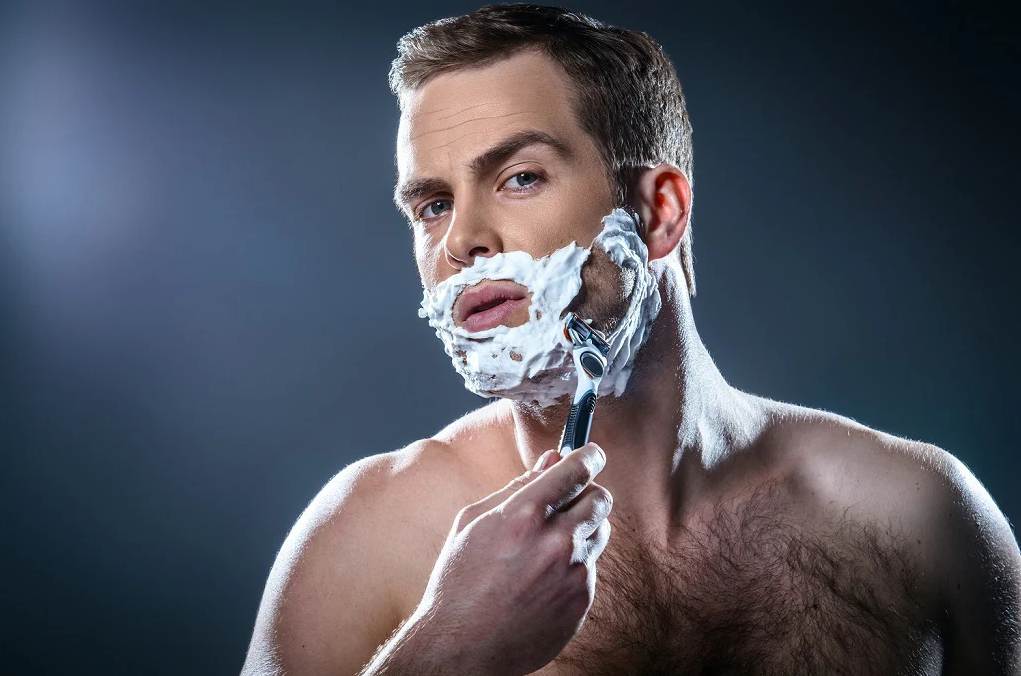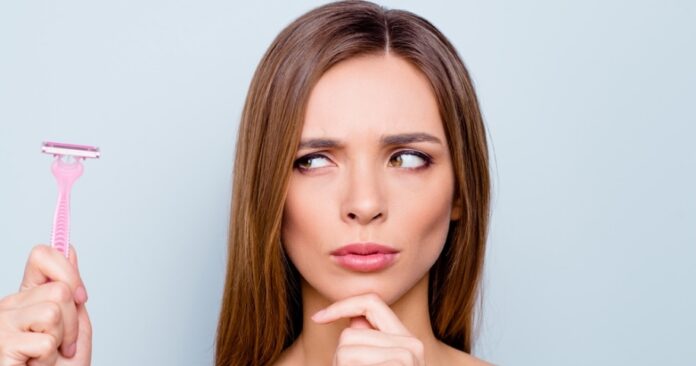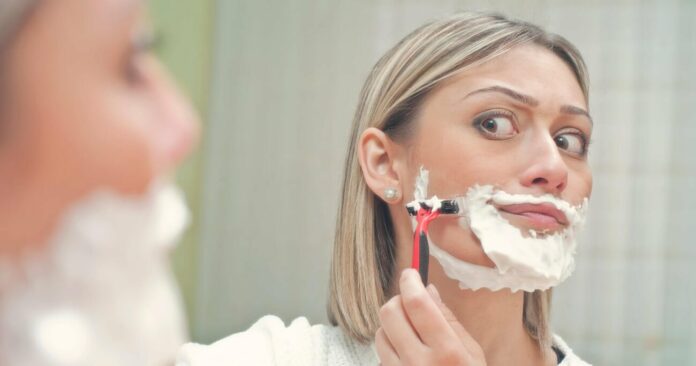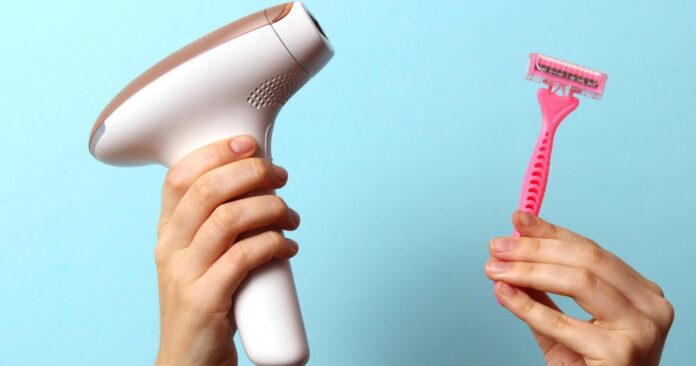Shaving is the top choice for trimming unwanted hair from beards and intimate hair for men and getting hairless smooth skin for women. It quickly removes dead skin cells while improving skin texture and boosting cellular regeneration.
However, it is also associated with razor burns, skin irritation, itching, bumps, and redness. Furthermore, some people experience acne after shaving.
So, do you wonder, “Does shaving cause acne”? If yes, let us talk about why shaving leads to acne, how to prevent acne caused by shaving, and what other hair removal choices you have.
Table of Contents:
- Part 1: Does Shaving Your Face Cause Acne?
- Part 2: Why Does Shaving Cause Acne?
- Part 3: How to Prevent Acne After Shaving?
- Part 4: Alternatives to Traditional Shaving for Acne Prone Skin
Part 1: Does Shaving Your Face Cause Acne?
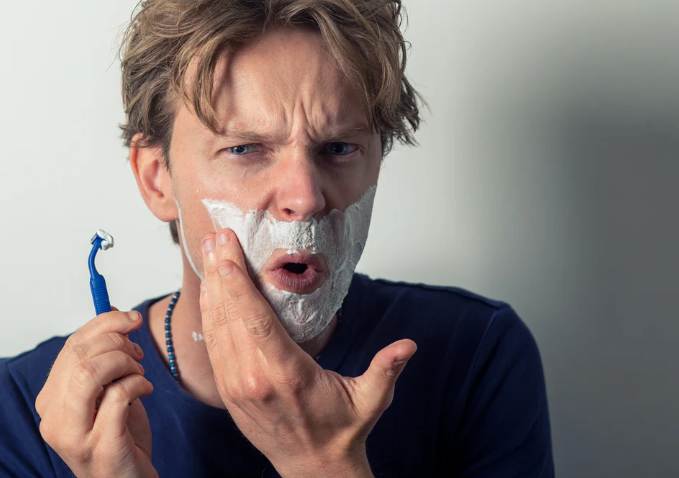 Medically speaking, acne is an inflammatory condition of the skin caused by bacterial invasion and clogging of the pores by dead skin cells and excess oils.
Medically speaking, acne is an inflammatory condition of the skin caused by bacterial invasion and clogging of the pores by dead skin cells and excess oils.
On the other hand, what you generally see after shaving are razor bumps and not the actual acne. Razor bumps appear as red and inflamed bumps with a central black dot while acne contains white or black heads.
However, it does not mean that shaving cannot cause acne. There are several mechanisms (that we will discuss in the next heading) through which shaving can cause acne.
Furthermore, note that shaving can worsen the already present acne and make it more apparent on the skin.
Part 2: Why Does Shaving Cause Acne?
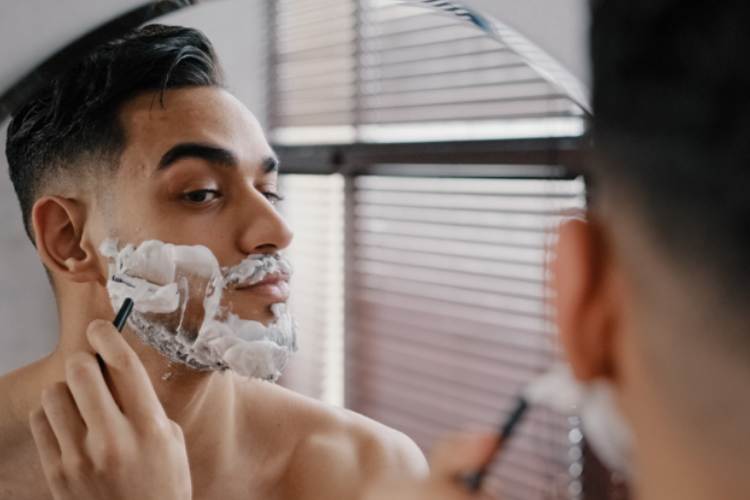 Here are some after-effects of shaving which lead to the development of acne on the skin.
Here are some after-effects of shaving which lead to the development of acne on the skin.
1. Contact Dermatitis
Contact dermatitis means the appearance of red bumps on the skin after contact with a harsh substance. In the case of shaving, the following mechanisms cause contact dermatitis and thus shaving-induced acne,
- The ingredients of shaving products trigger an allergic reaction on the skin
- The use of old and dull blades exerts pressure on the skin causing skin irritation
2. Folliculitis
Folliculitis is defined as the inflammation and infection of the hair follicles. It appears as acne-like bumps on the skin. Shaving causes the transfer of bacteria from the shaving blade to the hair follicles.
These bacteria cause folliculitis that appears as pus-filled red bumps on the skin. Some other folliculitis-like conditions that can occur after acne include,
- Folliculitis keloidal nuchae
- Pseudofolliculitis barbae (PFB)
- Tinea barbae
3. Curly Facial Hair
People with curly facial hair are more prone to the development of acne post-shaving. It is because, when a curly hair strand is cut off mid-way in its length, there are more chances of it twisting under the surface of the skin rather than growing outwards.
This type of hair grown under the surface of the skin is called ingrown hair and looks like a bump caused by acne.
4. Transmission of Bacteria and Other Microbes
As we explained earlier, acne is scientifically caused by bacteria, unclean shaving razors and shaving without washing your face can increase the transmission of bacteria into the pores of the skin.
Once the bacteria invade the skin, they initiate an inflammatory reaction resulting in acne.
5. Clogging of Skin Pores
One of the important steps of shaving is using a pre-shave product like shaving cream. The use of comedogenic ingredients in shaving cream, lotion, gel, or foam clogs the pores and these appear as pimples on the skin.
Part 3: How to Prevent Acne After Shaving?
If you have acne-prone skin and still want to shave the unwanted beard, here is what you can do to avoid acne after shaving.
1. Lubricating the Skin Before Shaving
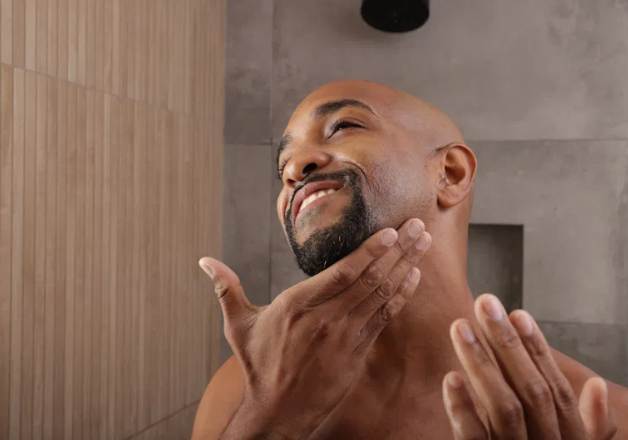 Shaving on dry or simply wet skin increases the pressure you need to put on the skin and shaving razors also move with difficulty. Consequently, the skin is irritated and it lead to acne.
Shaving on dry or simply wet skin increases the pressure you need to put on the skin and shaving razors also move with difficulty. Consequently, the skin is irritated and it lead to acne.
Providing a lubricating surface to the skin with hydrating products gives shaving razors a smooth surface to move easily. So, use a pre-shaving product like shaving cream, gel, oil, or foam to hydrate the skin and avoid acne.
2. Cleansing the Skin Appropriately
As the buildup of your routine skincare products and pollutants from the environment can clog pores and cause acne, wash your skin with a gentle cleanser to prepare it for shaving.
Not only the skin, wash the shaving razor after every few strokes as well to reduce the clogging of the razor and thus of your skin pores.
3. Open Your Facial Pores
Clogged facial pores become even more clogged and visible on the skin if you shave your face with no preparation. To unclog the pores and soften the coarse facial hair, take a warm towel and place it on your skin for a few minutes.
Furthermore, warm water rinse hydrates the skin.
4. Use a Fresh Shaving Razor
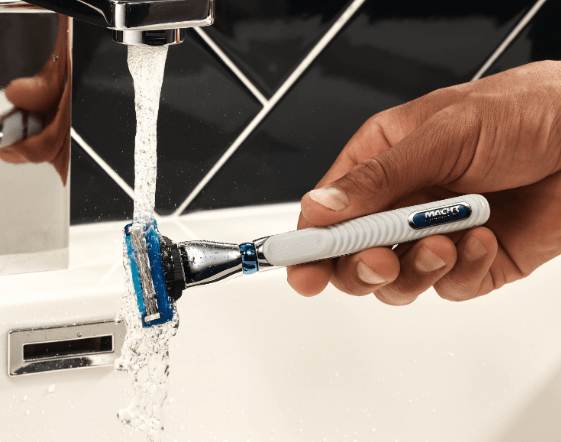 A razor with dull blades tugs the skin, causes skin irritation, and results in acne. So, always use a fresh or sharp razor to shave the unwanted hair from your face.
A razor with dull blades tugs the skin, causes skin irritation, and results in acne. So, always use a fresh or sharp razor to shave the unwanted hair from your face.
In addition to being sharp, a fresh razor is also clean and does not aid skin invasion of bacteria and impurities. Note that a shaving razor with blade guards or more blades is more gentle on the skin.
5. Use an Antibacterial Toner
If we think about the pathology of acne, bacteria is the organism causing it, right? So, killing the bacteria with an antibacterial toner helps keep the skin clean and prevents acne.
6. Use Alcohol-Free Products
Alcohol dehydrates the skin and dehydrated skin is more prone to skin irritation. As skin irritation gives way to the formation of razor bumps, avoiding alcohol in your shaving products can reduce razor bumps on the skin.
So, read the ingredient list of your shaving products and ensure that you use alcohol-free products. Also, using shaving foam/gel with tea tree oil and salicylic acid aids in fighting acne-causing bacteria.
7. Take Care of Skin Post-Shaving
After shaving, pamper your skin to soothe its redness and reduce other side effects caused by razors. For this,
- Wash your face with lukewarm water to remove the remnants of the shaving products and dead skin cells
- Apply a thick layer of lightweight, non-comedogenic, and fragrance-free moisturizer on the skin
8. Follow the Right Shaving Technique
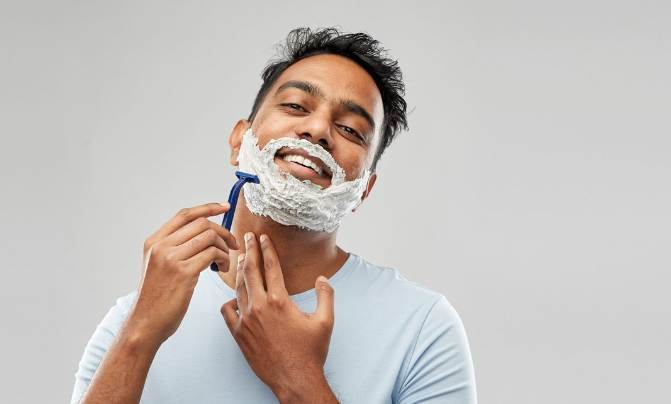 Your shaving technique plays an important role in determining whether you will get acne post-shaving. The accurate shaving technique includes pre and post-care of shaving and using the right shaving products. Additionally, you can,
Your shaving technique plays an important role in determining whether you will get acne post-shaving. The accurate shaving technique includes pre and post-care of shaving and using the right shaving products. Additionally, you can,
- Shave in the direction of hair growth
- Use the razor in short strokes
- Do not exert much pressure on the skin
Part 4: Alternatives to Traditional Shaving for Acne Prone Skin
For acne-prone and sensitive skin it is better to avoid shaving the face or areas with thick hair in the first place. So, here are the alternate methods of hair removal you can try.
1. Shaving With Electric Razors
For facial hair removal, electric shaving devices like electric razors and depilators work great. While their results are similar to shaving, they are gentle on the skin as they lift the hair before trimming it.
Thus, there is no contact of the sharp blades with the skin and hence there is no skin irritation and acne.
2. Waxing
Waxing removes the unwanted hair from the root. As the hair is removed from the roots, the risk of the formation of ingrown hair and razor bumps is greatly reduced.
Moreover, the results of Waxing last for a longer time, and hair grows back to be thinner and lighter. Although it can be used for facial hair, waxing is more suitable for the body.
3. Depilatory Creams
For efficient hair removal on your private parts, depilatory creams serve as one of the top choices. These creams dissolve the hair strands and you can wipe the unwanted hair off to get silky smooth skin.
However, depilatory creams must be used with caution as they can cause chemical burns on the skin.
4. IPL Hair Removal Devices
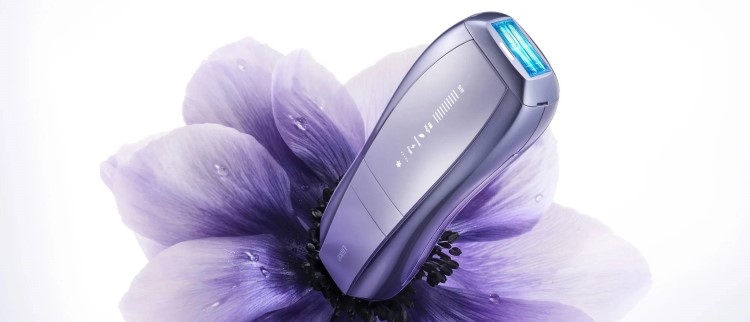 Electric razors for the face, waxing for the body, and depilatory creams for the intimate areas, using different hair removal methods for different areas of the body can be inconvenient.
Electric razors for the face, waxing for the body, and depilatory creams for the intimate areas, using different hair removal methods for different areas of the body can be inconvenient.
Not to mention that all of these methods come with some sort of side effects. However, you can try Ulike Air 10 IPL hair removal handset as it is,
- A versatile method of hair form that works on every part of the body from head to toe
- As it removes the hair from the roots, there is no risk of ingrown hair or folliculitis
- IPL hair removal does not cause any micro-tears on the skin and is a hygiene method of hair removal
- Its results last for 6 months once the treatment sessions are complete
Conclusion
Shaving is commonly associated with razor bumps, ingrown hair, and folliculitis. But, it can also give rise to acne by bacterial invasion of the skin, especially on sensitive skin.
To avoid acne and razor bumps caused by shaving, you have to moisturize your skin, wash it with warm water, and apply a shaving gel before shaving. During shaving, follow a proper shaving technique, and after shaving, apply moisturizer on the skin.
Lastly, you can choose an alternative to shaving. One of the foolproof alternatives to shaving is IPL hair removal.

 By Viktoria
By Viktoria
